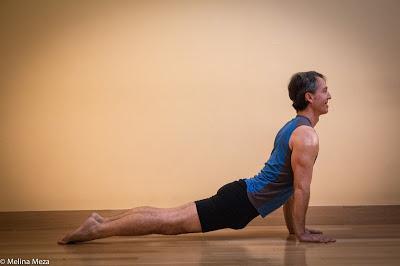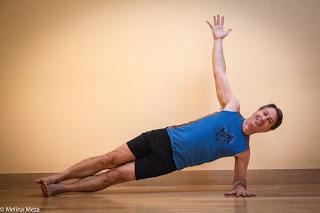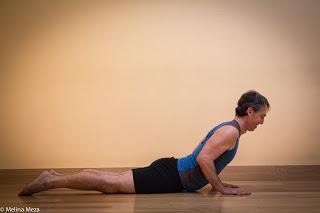
Baxter Bell, Age 54
Food, water and air were hanging out one day, when food boasted about how important it was to humans, saying, “People can’t last a month without my precious gifts of nutrition and energy!” But water was not to be outdone and quickly retorted, “Well, food, they cannot last three days without my cooling, refreshing elixir!” Air just smiled for a while, and then stated briefly, “Eight minutes.” Case closed!Our breath delivers air to our lungs, which extract oxygen for our use as fuel. And we deliver carbon dioxide, a byproduct of our activity, back to the lungs for removal via your exhalations. The health and good function of the lungs, the respiratory diaphragm, the chest cavity, and accessory muscles of breathing, and the complex interaction of the brain, nervous system, and circulatory system all work together to maintain the essential function we call “breathing.” Aging and the Respiratory SystemThe respiratory system undergoes various anatomical, physiological and immunological changes as we age. The structural changes include chest wall and thoracic spine deformities (think Dowager’s Hump, or kyphosis, and also scoliosis), which can impair the total respiratory system compliance leading to increased work of breathing. The internal lung tissue loses its supporting structure, which can lead to the air spaces dilating and getting bigger than normal, resulting in something called “senile emphysema.” This reduces the ability of oxygen to get the bloodstream (though not the ability of carbon dioxide to exit the blood stream and return to the lungs). Respiratory muscle strength decreases with age and can impair effective coughing, which is important for airway clearance of mucus and phlegm, and can increase the risk from respiratory infections. Interestingly, the lung matures by age 20–25 years, and thereafter aging is associated with progressive decline in lung function, although gradual. So, younger adults need to be mindful of this fact as well as older adults. The airways nerve receptors undergo functional changes with age and are less likely to respond to drugs used in younger adults to treat the same disorders. Older adults have decreased sensation of shortness of breath and decreased breathing response to low oxygen and high carbon dioxide levels, making them more vulnerable to lung failure during high-demand situations, such as with heart failure or pneumonia, that may lead to prolonged illness and even death.Yoga and the Respiratory SystemYoga has many potential beneficial effects on our respiratory system. Structurally, regular asana and pranayama practices can address changes to the chest wall bones and the thoracic spine to improve the boney alignment of these structures via postural improvement and increased movement. Specific asanas can also be used to target problem areas. For example, if you are developing more rounding of the thoracic spine, focusing on adding more dynamic and static back bending postures into your routine can start to rebalance these structures.Yoga asana and pranayama can also address the issue of weak muscles around the lungs. You can actively challenge the diaphragm via extending the length of the inhalations and exhalations, and utilizing holds at the top and bottom of the breath. And you can use asanas to strengthen the muscles around the chest wall, such as Side Plank pose (Vasithasana) variations, and others to strengthen the side chest muscles, such as Cobra (Bhujangasana) or Upward-Facing Dog pose (Urdva Mukha Svanasana).

Side Plank Pose Variation

Cobra Pose Variation
Regular yoga practice can also reveal unusual or unhealthy breathing patterns, such as excessive tension of the abdominal muscles during breathing. Once you identify these breathing patterns, you can then work with your teacher or yoga therapist to practice breath techniques that can release these inefficient ways of breathing and re-establish a healthier pattern of respiration.Although yoga has mixed reviews on its benefits for certain breathing conditions such as asthma, anecdotally, I have had students report that their regular yoga practice has been helpful with situations such as exercise-induced asthma, which can affect younger adults, but can also arise in older adults as well. Conversely, teachers like Barbara Benagh, who developed asthma as an adult, found some of the pranayama techniques she had been taught actually worsened her asthma symptoms. Not wanting to give up on breath techniques entirely, she searched out other styles of breath training that seemed to help her asthma over time (see Yoga and Mild Asthma).And recent studies have shown some yoga tools are effective in improving lung function in those with chronic obstructive pulmonary disease (COPD), which often arises from smoking, environmental exposures, and other illnesses. Other studies, such as Effect of meditation on respiratory system, cardiovascular system and lipid profile., have demonstrated overall improvement in respiratory function from regular meditation alone:"Vital capacity, tidal volume and breath holding were significantly higher in short and long term meditators than non-meditators. Long-term mediators had significantly higher vital capacity and expiratory pressure than short-term meditators.”(All those fancy technical terms indicate better overall breathing function.)And because yogic breathing exercises help to regulate the autonomic nervous system’s responses to stress, such as being able to dampen the sympathetic response (Fight or Flight), working on yoga to improve respiratory function will have the added benefit of lowering overall stress, improving your sense of well-being, and even having positive effects on mental-emotional conditions, such as, depression, anxiety and mental concentration, all of which can be present in those with breathing challenges. So, as we have seen with other systems of our bodies, yoga has multiple tools available to address the aging breathing system of the body and influence it on multiple levels.
To learn more, see Effect of aging on respiratory system physiology and immunology and Effect of meditation on respiratory system, cardiovascular system and lipid profile.Subscribe to Yoga for Healthy Aging by Email ° Follow Yoga for Healthy Aging on Facebook ° Join this site with Google Friend Connect

